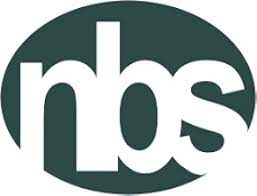HSBC Bank Branch Code, BIC Code (Swift) – A Detailed Guide
In today’s interconnected financial world, understanding the importance of branch codes and BIC codes (SWIFT codes) is essential for both local and international banking transactions. Whether you are transferring funds within your country or sending money overseas, these codes play a vital role in ensuring your transactions are accurately routed and securely processed.
HSBC, one of the largest and most trusted global banks, uses these codes to facilitate the smooth transfer of funds. Whether you are making a domestic payment or sending money across borders, knowing your HSBC bank branch code and SWIFT code is crucial for the success of your transaction. This comprehensive guide will explain what these codes are, how to use them, and provide the necessary details for conducting seamless transactions.
What is a Branch Code?
A branch code is a unique identifier assigned to each branch of a bank. In the case of HSBC Bank, this code is used primarily for domestic transactions. It helps route payments, deposits, and transfers to the correct branch of the bank.
Why is the Branch Code Important?
- Routing Payments: The branch code ensures that payments and transfers are directed to the correct HSBC branch, ensuring accurate processing.
- Deposits: If you’re making a deposit (whether cash, cheque, or electronic transfer), the branch code ensures that the funds are credited to the correct branch.
- Bill Payments: When paying bills to local service providers, the branch code ensures that the payment reaches the right branch for processing.
What is a BIC Code (SWIFT Code)?
A BIC code (Bank Identifier Code), also known as a SWIFT code, is used for international payments. This code helps identify banks and financial institutions around the world, ensuring that money is routed to the correct destination. The SWIFT code is essential for cross-border transactions, as it ensures that funds are directed to the appropriate financial institution in a different country.
A SWIFT code typically consists of 8 to 11 characters:
- Bank Code: The first four characters identify the bank.
- Country Code: The next two characters represent the country where the bank is located.
- Location Code: The next two characters refer to the city or region where the bank operates.
- Branch Code (optional): The final three characters identify a specific branch of the bank.
For HSBC Bank, the SWIFT code is used for international transactions to ensure that payments are directed to the correct bank and branch across borders.
HSBC Bank Branch Code and SWIFT Code
As one of the largest and most globally recognized banks, HSBC operates both domestic and international payment networks. Here’s what you need to know about the HSBC branch code and SWIFT code:
HSBC Bank Branch Code
For domestic transactions within a country, HSBC uses branch codes to accurately route payments, deposits, and transfers. The branch code ensures that your transaction reaches the correct branch of HSBC for processing.
To find your HSBC branch code, refer to your bank account details, visit HSBC’s official website, or contact their customer service. Each branch has a unique branch code for domestic transactions.
HSBC Bank SWIFT Code (BIC Code)
For international transactions, HSBC Bank uses a SWIFT code to ensure that payments are routed accurately across countries. The SWIFT code ensures that the funds are transferred to the correct branch of HSBC globally.
The SWIFT code for HSBC Bank is:
HSBCGB2L
Here’s how the SWIFT code is broken down:
- HSBC: Represents HSBC Bank.
- GB: The country code for the United Kingdom.
- 2L: The location code, which represents the specific branch in the United Kingdom.
If you’re sending money from or to another country, the SWIFT code is required to ensure that the funds reach the appropriate branch of HSBC.
How to Use Branch Code and SWIFT Code for Transactions
Both the branch code and SWIFT code are crucial when performing HSBC banking transactions. Here’s how you can use them:
1. Domestic Transactions – Branch Code
When conducting local transactions within a country, the branch code is required for:
- Transferring funds between HSBC Bank and other domestic financial institutions.
- Paying bills to local service providers such as utilities, taxes, and insurance premiums.
- Depositing funds into your account, whether by cash deposit, cheque deposit, or electronic transfer.
2. International Transactions – SWIFT Code
For international payments, the SWIFT code ensures that the funds are transferred accurately to the intended destination. You will need the SWIFT code for:
- Sending money abroad: When sending funds to another country, you will need to provide the SWIFT code to ensure that the money is routed to the right branch of HSBC.
- Receiving international payments: If you are receiving funds from abroad, the SWIFT code ensures that the transaction is correctly processed and sent to your HSBC account.
- Currency conversion: The SWIFT code is crucial for processing transactions involving foreign currencies, as it guarantees that the payment reaches the correct bank and branch.
Why Are These Codes Important?
Using the correct branch code and SWIFT code is essential for ensuring that your transactions are processed smoothly. Here’s why they matter:
- Accuracy: The branch code ensures that your local transactions are routed to the right branch, and the SWIFT code ensures international payments reach the correct financial institution.
- Security: These codes minimize the risk of fraud by ensuring that funds are sent to the correct bank and branch.
- Efficiency: Correct use of these codes ensures that transactions are processed quickly, reducing delays in payments and transfers.
- Compliance: Proper use of SWIFT codes helps ensure compliance with international banking regulations, including anti-money laundering (AML) and know-your-customer (KYC) laws.
Understanding HSBC Bank’s branch code and SWIFT code is essential for conducting both domestic and international banking transactions. Whether you are transferring funds locally or sending money abroad, knowing the correct branch code for domestic transactions and the SWIFT code for international payments will ensure that your funds are transferred securely and accurately.
For more information about HSBC’s branch code or SWIFT code, visit their official website or contact their customer service team for assistance. Using the correct codes for your transactions will ensure a smooth and efficient banking experience.




